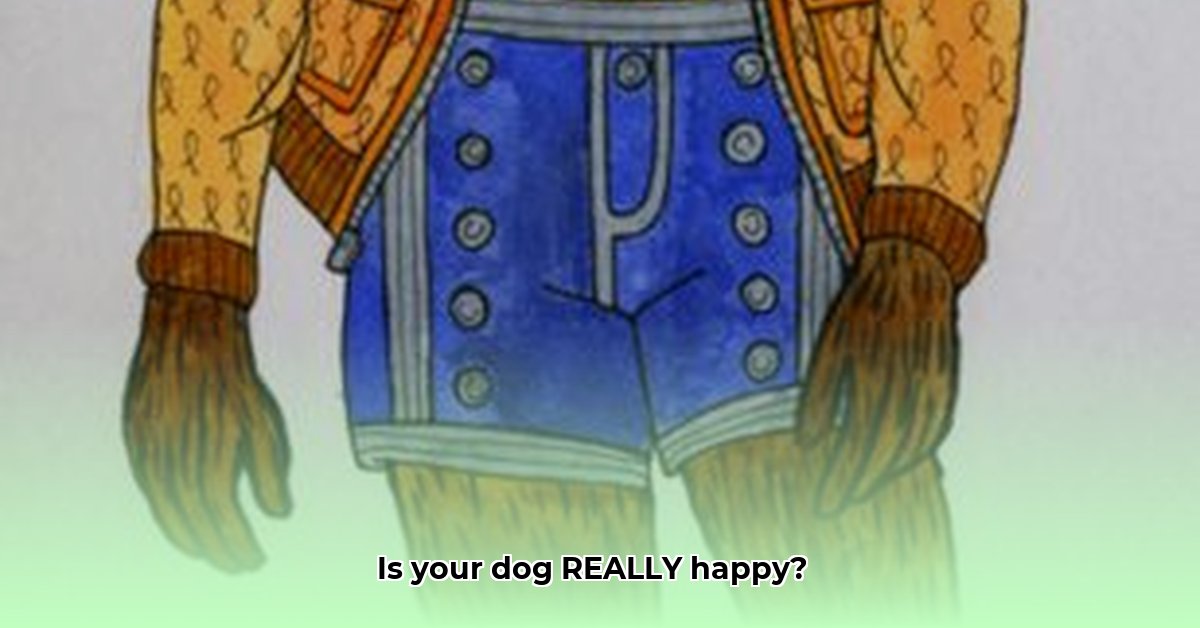Have you ever scowled at your dog for seemingly giving you the “stink eye” after being left home alone, or sworn they looked guilty after an accident on the rug? We’re all susceptible to anthropomorphism – projecting human emotions and motivations onto our dogs. While it feels natural to interpret their actions through our own experiences, doing so can hinder our ability to truly understand their needs and build a stronger, healthier relationship. This guide will help you ditch the human assumptions, decode your dog’s true language, and strengthen your bond based on canine, not human, understanding.
Why We Humanize Dogs (and Why It’s a Problem)
We love our dogs. We see flickers of understanding in their eyes, a smile in their panting. It’s almost instinctive to interpret their actions through our own human lens. But this anthropomorphism can be a double-edged sword. While it fuels our affection, it can also misguide our interactions.
The Allure of Anthropomorphism
The appeal of anthropomorphism is deeply rooted in our human need for connection. Seeing human-like qualities in our dogs strengthens our bond with them, making us feel closer and more understood. It’s comforting to believe our dogs share our emotional landscape.
The Problem with Projection
The problem arises when this projection leads to misinterpretations of canine behavior. That “guilty” look after your dog chews your favorite slippers? Probably not remorse, but rather appeasement in response to your raised voice and tense body language. They’re reacting to your cues, not reflecting on their actions. This miscommunication can lead to frustration, confusion, and ultimately, a less harmonious relationship.
Misreading Signals: The Risks of Anthropomorphism
Anthropomorphism isn’t just about misinterpreting emotions; it can have tangible consequences for your dog’s well-being. Dressing your dog in a sweater on a sweltering day because you feel cold? That’s not cute; it’s potentially dangerous. From restricting movement with tight clothing to feeding them unbalanced diets of human food, our human projections can inadvertently jeopardize their health and happiness.
Misinterpreting Dog Behavior
Anthropomorphism makes it easy to misread crucial canine communication signals. A wagging tail isn’t always a sign of joy. It can indicate excitement, anxiety, or even a warning, depending on the speed, position, and context. Similarly, flattened ears might signal appeasement or fear, not sadness. Mistaking fear for playfulness can lead to pushing a dog into uncomfortable situations, potentially escalating anxiety and triggering problematic behaviors.
Compromising Canine Welfare
Our well-intentioned humanizations can compromise a dog’s physical and emotional well-being. Over-exercising a dog because we enjoy vigorous activity, or neglecting their need for mental stimulation because we assume they’re content with human companionship, can lead to health issues and behavioral problems.
Speaking Dog: Understanding Canine Communication
So, if we can’t rely on human interpretations, how do we understand our dogs? Dogs communicate through a complex interplay of body language, vocalizations, and scent. A yawn, for instance, can indicate stress or anxiety, not just tiredness. A dog rolling on its back might be displaying submission, inviting play, or simply enjoying a belly rub. The key is to learn their language, interpreting signals within the broader context of the situation.
A Dog’s-Eye View: Practical Tips for Avoiding Anthropomorphism
Shifting your perspective and viewing the world through your dog’s eyes is key to a healthier, more authentic relationship. Here’s how:
Observe, Don’t Interpret
Resist the urge to project your emotions. Instead, objectively observe your dog’s behavior. What happened before and after the behavior? What are their ears, tail, and body doing? These objective observations are far more informative than assumptions.
Prioritize Needs Over Wants
Dogs have fundamental needs – exercise, mental enrichment, nutritious food – that differ from human desires. Focus on meeting their needs, not projecting your own. This might mean swapping that cute sweater for a stimulating puzzle toy or an engaging game of fetch.
Positive Reinforcement: The Language of Success
Positive reinforcement training focuses on rewarding desired behaviors. This method avoids relying on potentially inaccurate emotional interpretations, clearly communicating desired actions and building trust. It’s about showing your dog what to do, not punishing them for what not to do.
When to Seek Professional Help
When in doubt, consult a certified professional dog trainer or a veterinary behaviorist. They can offer invaluable insights into your dog’s individual needs and behaviors, helping you navigate challenges and deepen your understanding.
Breed Bias: Anthropomorphism and Stereotypes
Anthropomorphism can reinforce harmful breed stereotypes. Assuming a Pit Bull is aggressive or a Chihuahua is nervous based on preconceived notions can lead to misinterpreting their behavior and even influence how we train them. Remember, each dog is an individual, regardless of breed, with their own unique personality and experiences.
Beyond Anthropomorphism: Building a Stronger Bond
Moving past anthropomorphism doesn’t mean loving your dog any less. It means appreciating them for who they truly are – dogs, not miniature humans. By understanding their unique communication style and prioritizing their needs, you’ll build a stronger, more genuine bond based on mutual respect and understanding. It’s about seeing the world through their eyes, not projecting our own experiences onto them.
Further Exploration
For a deeper dive into canine behavior and communication, consider exploring resources from organizations like the American College of Veterinary Behaviorists (https://www.dacvb.org/) and the Certification Council for Professional Dog Trainers (https://www.ccpdt.org/). These resources can offer valuable insights and support as you continue on your journey to understanding your canine companion. Remember, our understanding of dog behavior is constantly evolving, so staying curious and open to new information is key to decoding the fascinating world of our furry friends.
- Adult Bento Box Ideas for Delicious and Easy Lunches - December 23, 2025
- Healthy Bento Lunch Ideas for Adults to Enjoy Lunch Again - December 22, 2025
- Glass Lunch Box Containers Offer Healthy, Leak-Proof Meal Prep - December 21, 2025










